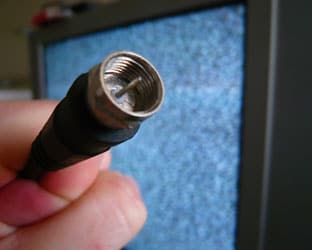RBR-TVBR News Analysis
The recent sale of the McGraw-Hill stations to Scripps may be a bit of a sea change for television multiples out there in the marketplace. Everyone seems to be acknowledging that the deal is around 8X 2012 cash flow. If that’s the case, it represents a significant change, because while we haven’t had many major deals for the last couple of years, everyone has been sort of waiting for the other shoe to drop with television valuations. The general belief was that multiples were hanging around the 10X level for major television affiliates.
If these are at 8X, that’s significant. It means that television, for the first time in quite a while is now trading at multiples comparable to radio—look at the Hubbard-Bonneville transaction, for instance.
McGraw-Hill’s Broadcast Group consists of only four full-power stations, all ABC affiliates: KMGH-TV Denver, KGTV-TV San Diego, WRTV-TV Indianapolis and KGTV-TV Bakersfield, CA. It also has Azteca America affiliates on digital multicast channels and/or LPTVs in Denver, Fort Collins, Colorado Springs, San Diego and Bakersfield.
The purchase price was $212 million, but Scripps expects an immediate tax benefit of $20-25 million because of the structure, reducing the effective price to around $190 million. That works out to a broadcast cash flow multiple of 8X, said Scripps CFO Tim Wesolowski. Note that the likely closing date will allow the stations to benefit from the upcoming 2012 political cycle—possibly an all-time record.
The other good recent example was Cerberus Capital Management selling its Four Points television stations to Sinclair Media. For an investment of $200M, Sinclair gets one station in Austin TX, one in Providence RI, two in Salt Lake City and three in West Palm Beach. Multiple reports say that deal has a pro-forma multiple of 6.5X blended 2010-11 cash flow—again, lower than one would expect for television stations, even though they are not major markets.
The acquisition includes:
* KUTV (CBS 2) Salt Lake City, Utah
* KMYU (MNT 9) Salt Lake City, Utah
* KEYE (CBS 42) Austin, Texas
* WTVX (CW 34) West Palm Beach/Fort Pierce, Florida
* WTCN-CA (MNT 50) West Palm Beach/Fort Pierce, Florida
* WWHB-CA (AZTECA 48) West Palm Beach/Fort Pierce, Florida
* WLWC (CW 28) Providence, Rhode Island/New Bedford, Massachusetts
RBR-TVBR observation: Why are the multiples coming down to par with radio? For major network affiliates, cash flow used to be extremely predictable. There was very little to rock the boat. Now, new challenges are emerging in the traditional network-affiliate model. Specifically, uncertainties regarding future retransmission charges—because these are potential fees that have to be paid by the affiliate to the network, vs. revenue received from the cable companies. Also, there is uncertainty as to the future exclusivity of programming, which is now provided on a geographically-exclusive basis to an affiliate. Are new technologies going to surface that will not make that exclusivity iron-clad?
Local television affiliates and broadcast networks are experiencing a lot of what radio has been suffering through—lower local ad dollars and fragmentation of audience over to other media. In the local affiliates’ case, it is cable for the most part that is getting the viewers and ad dollars. Look at the most recent numbers here from ZenithOptimedia. This is also starting to be manifested in lower valuations. Also—local broadcast over-the-air viewers with the 2009 conversion to DTV. These were previously viewers that did not have a choice to flip over to cable channels.
RBR-TVBR NOTE: We encourage all to “Like” on Facebook and become a social media editor with RBR-TVBR
We urge all to http://twitter.com/#!/RBRTVBR join the broadcaster social media Voice




